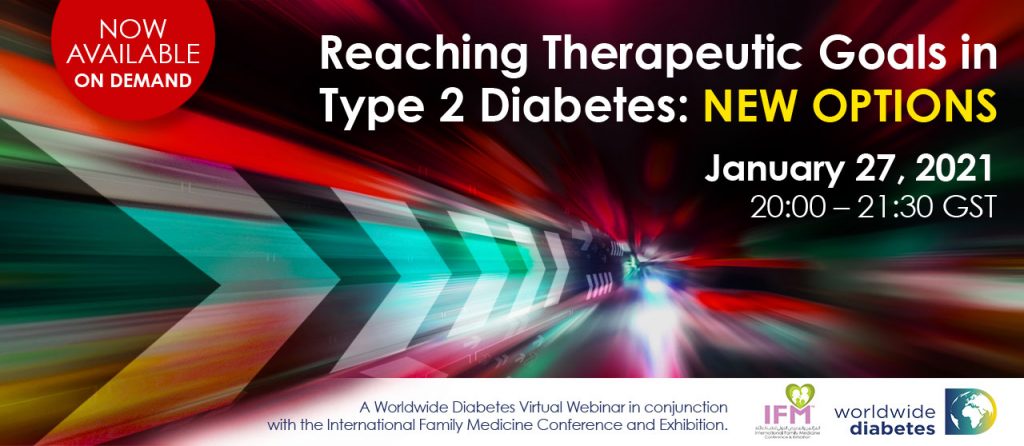
< Back to Blog Listing and Webinar Information
New Type 2 Diabetes Treatment Options: Optimizing Results Amidst the COVID-19 Pandemic
Shashank R. Joshi, MD, DM, FRCP, FACE, FACP, FICP, FICN
Mumbai, Maharashtra, India
01/23/2021
The COVID-19 pandemic has necessitated new procedures and protocols for the diagnosis and treatment of type 2 diabetes. In light of current restrictions, it is important–especially in parts of the world under lockdown–that we bring patients back to the clinic only when there is no alternative. Instead, we should rely on a variety of options. Patients and medical staff can communicate via telephone calls, video visits, and/or through electronic patient portals. These methods work best with patients with whom we have strong, existing relationships.
In addition to dealing with patients’ queries and concerns, communicating remotely can help patients get a steady supply of medications, without the need for the usual clinic visits and lab testing. During this period, there has been a greater focus on self-monitoring of blood glucose (SMBG) or continuous glucose monitoring (CGM) for patients on insulin or sulfonylureas. In addition, because of the pandemic, we have had to redefine how we identify our high-risk, high-need patients and how we can better anticipate the needs of all our patients. We have used data from both SMBG as well as CGM systems to monitor glycemic patterns in our patients and to guide decisions related to lifestyle interventions or changes in therapeutic regimen.
We must also prepare for the post-lockdown environment. Changes will have to be implemented to enable a safe and effective flow of patients as they return and move through the clinic, in a way that’s safe for them as well as for the staff. Our priority is to efficiently attend to them so that they can return home as soon as possible. We have summarized this in our 3-step process: In, Treat, Out. We’re achieving our goal by seeing fewer patients and minimizing the time per case spent in the clinic.
As we have adapted to these changing conditions, we have addressed some important questions. Do all our patients need face-to-face consultation? Can we partially shift some patients from in-person visits to virtual ones? This would apply mostly to follow-up care in patients with normal/expected laboratory parameters, who do not require complex changes in their drug regimen and have few or no comorbidities. These patients also need good support at home (for medication and monitoring) and access to technology that supports remote consultations.
Finally, we need to look at the role of newer treatment options that have evolved in recent years, including sodium-glucose cotransporter-2 (SGLT-2) inhibitors, glucagon-like peptide-1 (GLP-1) analogues, and modern insulins, including ultrafast and co-formulations. Our goal for patients is not just to achieve glucose control, but cardiorenal protection, without any weight gain or hypoglycemia. Modern antidiabetic therapies, including designer insulins, have been formulated to reduce glycemic variabilty and increase time in range.
An ongoing and thoughtful reassessment of how we treat all of our patients in these demanding and changing times will ensure that we provide optimal care while maximizing the safety of all who visit and work in our clinics. Join us for the upcoming webinar, Reaching Therapeutic Goals in Type 2 Diabetes: New Options, where we’ll be discussing these important issues. In the meantime, tell us about the strategies you are employing in the care of patients with diabetes and feel free to add to the list of questions to consider as we move forward. Please leave your comments below.
Register and Access the On-Demand Webinar
COMMENTS
REPLIES
There are no comments on this post yet.
